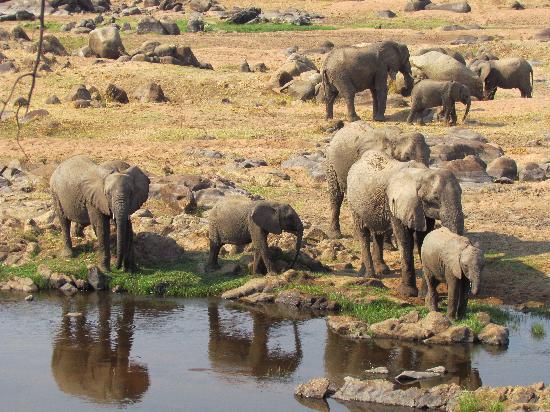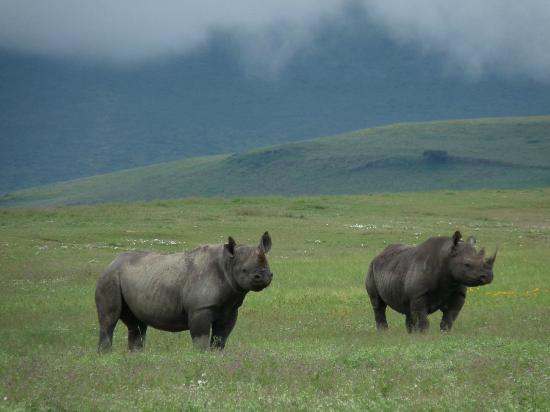Tanzania’s efforts to improve its infrastructure have led to a search for new revenue streams, which may impact growth in the tourism sector over the near term.
As part of a package of reforms aimed at funding an overhaul of the road, rail and air networks, in July the government removed a value-added tax (VAT) exemption for tourism services, which are now subject to 18% VAT. Financial services saw the withdrawal of a similar dispensation, and vehicle registration fees were raised as well.
As part of a package of reforms aimed at funding an overhaul of the road, rail and air networks, in July the government removed a value-added tax (VAT) exemption for tourism services, which are now subject to 18% VAT. Financial services saw the withdrawal of a similar dispensation, and vehicle registration fees were raised as well.
According to public statements from Philip Mpango, minister of finance and planning, tax revenues as a percentage of GDP are expected to rise – partly as a result of the VAT levy – from 12.6% in FY 2015/16 to 13.8% in FY 2016/17.
The need for new revenue streams is clear given the size of the capital outlays in the government’s latest budget, which outlines plans to increase spending by nearly one-third and forecasts the fiscal deficit expanding slightly to 4.5% of GDP.
The need for new revenue streams is clear given the size of the capital outlays in the government’s latest budget, which outlines plans to increase spending by nearly one-third and forecasts the fiscal deficit expanding slightly to 4.5% of GDP.
Infrastructure Push
Under the current plan, one-quarter of the total budget, or TZS5.47trn ($2.51bn), is allocated to infrastructure projects, with TZS2.18trn ($1bn) earmarked for road construction and rehabilitation, and TZS2.49trn ($1.1bn) for various projects to boost connectivity, including rail, port and airport upgrades.
Improving the condition of Tanzania’s transport networks would provide a range of benefits for a number of key sectors, including tourism.
“Poor roads and power shortages make tourists feel uncomfortable and erode the competitiveness of the destination,” Damas Mfugale, former chairman of the Hotel Association of Tanzania, told local media earlier this year.
Improving the condition of Tanzania’s transport networks would provide a range of benefits for a number of key sectors, including tourism.
“Poor roads and power shortages make tourists feel uncomfortable and erode the competitiveness of the destination,” Damas Mfugale, former chairman of the Hotel Association of Tanzania, told local media earlier this year.
Tanzania has roughly 86,000 km of roads, of which less than a quarter are paved, leading to access problems during inclement weather. Limited road networks beyond the popular sites in northern Tanzania have also dampened visitor traffic to less well-travelled parts of the country.
To this end, authorities at Ruaha National Park – the largest national park, spanning some 20 sq km of central Tanzania – recently appealed to the government to modernise the park’s access roads.
“Most roads leading to the park are in a poor condition, to the extent that visitors fail to reach the game reserve,” Maronda Maronda, acting chief park warden, told local media at the end of November.
To this end, authorities at Ruaha National Park – the largest national park, spanning some 20 sq km of central Tanzania – recently appealed to the government to modernise the park’s access roads.
“Most roads leading to the park are in a poor condition, to the extent that visitors fail to reach the game reserve,” Maronda Maronda, acting chief park warden, told local media at the end of November.
Higher-priced Tourism
The levying of VAT on tourism services – which will increase the costs of tours, game drives and safaris – has raised concern among domestic and international stakeholders in the tourism industry.
The Tanzania Association of Tour Operators, for example, estimated that the higher prices had resulted in at least 8000 visitor cancellations and $660,000 in lost revenue as of early July.
The country has also faced pushback from the European Travel Agents’ and Tour Operators’ Associations. Representing some 70,000 travel agents and tour operators in 27 European countries, the group threatened to rebook its customers to other African destinations – including neighbouring Kenya, which does not impose a VAT on tourism services – if the exemption was not reinstated.
The Tanzania Association of Tour Operators, for example, estimated that the higher prices had resulted in at least 8000 visitor cancellations and $660,000 in lost revenue as of early July.
The country has also faced pushback from the European Travel Agents’ and Tour Operators’ Associations. Representing some 70,000 travel agents and tour operators in 27 European countries, the group threatened to rebook its customers to other African destinations – including neighbouring Kenya, which does not impose a VAT on tourism services – if the exemption was not reinstated.
Key Sector
The private sector’s concerns come amid what has been a gradual decade-long increase in tourist numbers, with international arrivals increasing by nearly 90% since 2004 to reach 1.1m in 2015.
The sector is also the country’s highest foreign exchange earner, contributing TZS10.9trn ($5.03bn) to GDP last year, or 11.4%, according to the 2016 World Travel & Tourism Council (WTTC) report on Tanzania. The WTTC forecasts that this growth will remain steady over the next 10 years, maintaining an average growth rate of 7.1% per annum to reach 11.6% of GDP in 2026.
Visitors are drawn by a wide range of attractions, including Tanzania’s 16 national parks, 31 game reserves, 33 wildlife management areas and six nature reserves – which include iconic sites like Mount Kilimanjaro, Zanzibar and Serengeti National Park – as well as 1424 km of coastline on the Indian Ocean.
The sector is also the country’s highest foreign exchange earner, contributing TZS10.9trn ($5.03bn) to GDP last year, or 11.4%, according to the 2016 World Travel & Tourism Council (WTTC) report on Tanzania. The WTTC forecasts that this growth will remain steady over the next 10 years, maintaining an average growth rate of 7.1% per annum to reach 11.6% of GDP in 2026.
Visitors are drawn by a wide range of attractions, including Tanzania’s 16 national parks, 31 game reserves, 33 wildlife management areas and six nature reserves – which include iconic sites like Mount Kilimanjaro, Zanzibar and Serengeti National Park – as well as 1424 km of coastline on the Indian Ocean.


